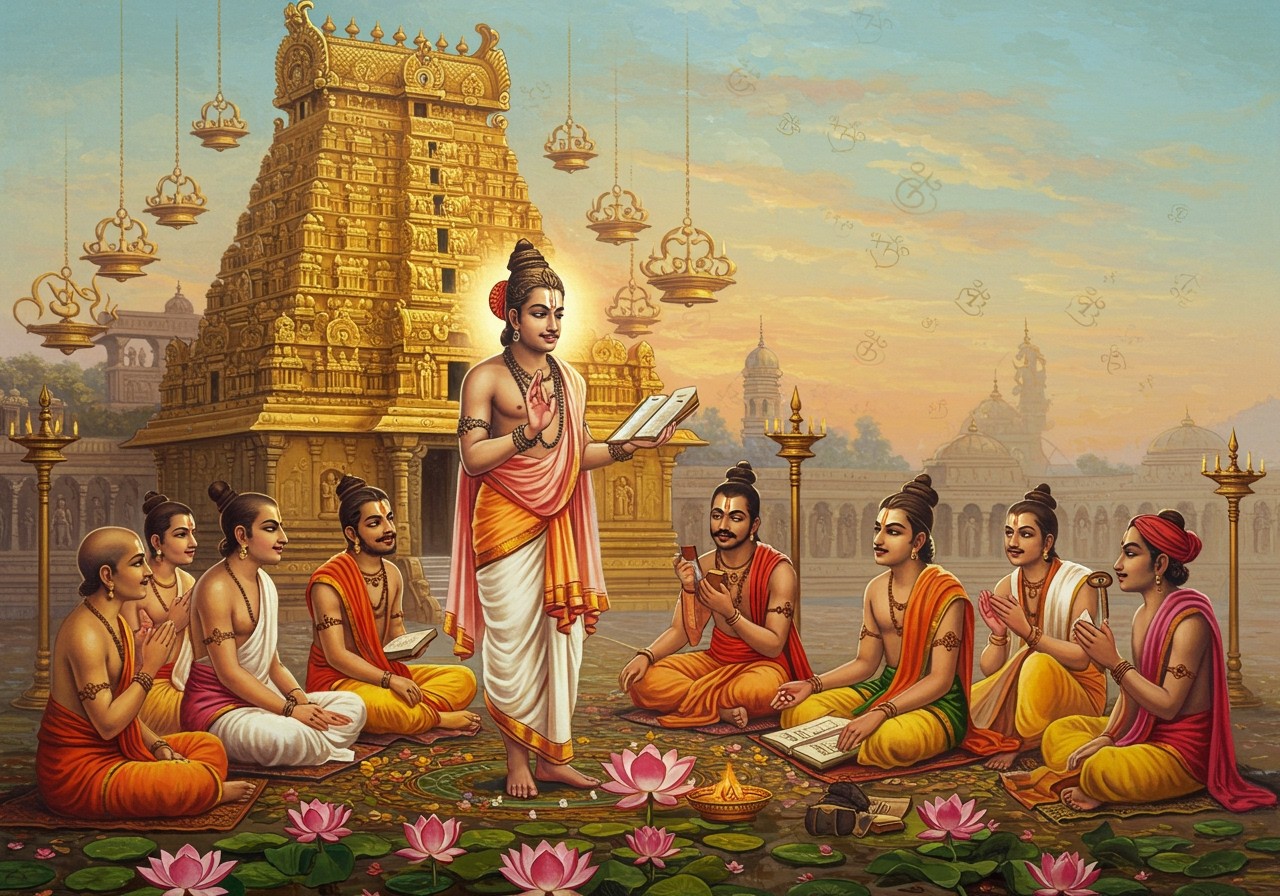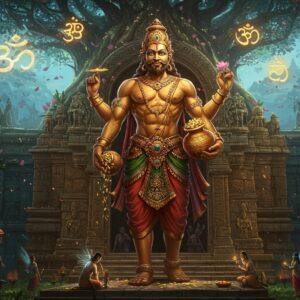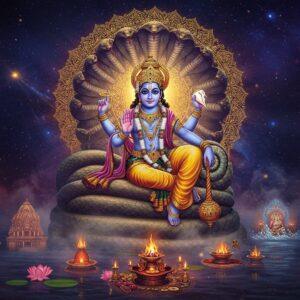
The Ramanuja Charya Tradition stands as a cornerstone of India’s spiritual heritage. Rooted in the teachings of the revered philosopher-saint Ramanuja Charya (c. 1077 – 1157 CE), this tradition offers profound insights that continue to resonate with spiritual seekers today. By exploring Ramanuja’s contributions to Hindu thought, we can connect with our cultural roots and deepen our understanding of spiritual practices. For those seeking resources for their spiritual journey, consider exploring the offerings at poojn.in, India’s leading store for cultural goods and services.
Who Was Ramanuja Charya?
Ramanuja Charya was a pivotal figure in the evolution of Vishishtadvaita Vedanta philosophy. His teachings, originating in the 11th century, emphasized the inherent unity of the individual soul with the divine. Ramanuja skillfully bridged the perceived gap between the individual spirit and the universal spirit, leaving an enduring impact on Vaishnavism and the Bhakti movement. His seminal work, the Sri Bhashya, remains a cornerstone of Hindu theological discourse. Exploring Hinduism provides further context on these core beliefs and practices.
The Core Philosophy: Vishishtadvaita Vedanta
Vishishtadvaita Vedanta, meaning “qualified non-dualism,” lies at the heart of Ramanuja’s philosophy. This concept proposes that the soul and the divine are distinct entities, yet they are inseparably interconnected. Devotion, known as bhakti, takes center stage as the essential path towards achieving moksha, or spiritual liberation. Furthermore, Ramanuja stressed the importance of dharma, ethical living, as an integral component of spiritual practice. His teachings offer a harmonious integration of the material and spiritual realms. You can explore related concepts of Dharma at Dharma in the Ramayana.
Practical Applications of Ramanuja’s Teachings
Followers of the Ramanuja tradition engage in a variety of spiritual practices and rituals. Temple worship and chanting of the Divya Prabandham hold significant importance. Gurus, or spiritual guides, play a crucial role in nurturing the devotees’ spiritual journeys. The concept of self-surrender, known as prapatti, is considered a key element in the pursuit of spiritual liberation. Cultural expressions, including music and dance, further enrich the tapestry of this tradition. Timeless Lessons for Modern Life from Ramayana offers insights into practical applications of these teachings.
Ramanuja’s Enduring Legacy in Modern Times
Even in today’s world, the Ramanuja Charya Tradition retains its relevance. The emphasis on inclusivity resonates deeply with modern values, attracting those seeking a harmonious balance between spiritual pursuits and contemporary life, particularly among members of the Indian diaspora. You can find products that support these spiritual practices at poojn.in. Their range of clay items and other Dashakarma items might be particularly relevant to your practice.
Ramanuja Charya’s Philosophy and Practice: A Deeper Dive
Philosophy:
- Vishishtadvaita (Qualified Non-Dualism): This philosophy blends monism and dualism, affirming the oneness of reality (Brahman) while acknowledging its diverse manifestations. It differentiates itself from Advaita Vedanta by describing Brahman as a personal God (Saguna) with infinite qualities, not as attributeless (Nirguna). Brahman encompasses everything but is not uniform.
- Three Realities: Ramanuja posits three distinct realities: Brahman (God), individual souls (jivas), and matter (prakriti). These are not illusions; rather, matter and souls constitute the “body” of God.
- Brahman as the Inner Ruler: Brahman is seen as the essence of the soul, the wellspring of intelligence, truth, and bliss, governing the world from within.
- Refutation of Mayavada: Ramanuja challenged the illusionism (Mayavada) of Advaita Vedanta, asserting the reality of the world and its capacity to provide true knowledge.
- Emphasis on Discursive Thought: Logical, discursive thought is deemed essential in the quest for ultimate truths.
- Goal of the Soul: The soul’s purpose is to serve God. Everything emanates from God’s being.
Consider enhancing your spiritual practice with authentic puja items available at poojn.in. They offer a wide selection, including Radha-Krishna Bigraha and Shiva Lingam.
Practice:
- Bhakti (Devotion): Devotion to a personal God, particularly Vishnu, is the primary path to liberation. This involves remembering, meditating on, and loving the Supreme.
- Temple Worship: Ramanuja standardized and reformed temple worship, particularly in Vaishnava temples, establishing practices that continue to this day.
- Social Reform: He championed inclusivity by opening temples to all castes and advocated for a society built on respect and ethical conduct.
- Ethical Conduct: Righteous living is considered essential for spiritual progress and attaining liberation.
- Grace of God: Divine grace is paramount for liberation. It’s a gift from God, bestowed through love and compassion, which devotees can receive through devotion, surrender, and ethical conduct.
- Daily Worship: Ramanuja instituted daily rituals, including chanting and singing hymns, to foster a continuous connection with the divine.
Explore more about the profound influence of the Ramayana on Indian culture here: Ramayana’s Influence.


